- News
- Reviews
- Bikes
- Accessories
- Accessories - misc
- Computer mounts
- Bags
- Bar ends
- Bike bags & cases
- Bottle cages
- Bottles
- Cameras
- Car racks
- Child seats
- Computers
- Glasses
- GPS units
- Helmets
- Lights - front
- Lights - rear
- Lights - sets
- Locks
- Mirrors
- Mudguards
- Racks
- Pumps & CO2 inflators
- Puncture kits
- Reflectives
- Smart watches
- Stands and racks
- Trailers
- Clothing
- Components
- Bar tape & grips
- Bottom brackets
- Brake & gear cables
- Brake & STI levers
- Brake pads & spares
- Brakes
- Cassettes & freewheels
- Chains
- Chainsets & chainrings
- Derailleurs - front
- Derailleurs - rear
- Forks
- Gear levers & shifters
- Groupsets
- Handlebars & extensions
- Headsets
- Hubs
- Inner tubes
- Pedals
- Quick releases & skewers
- Saddles
- Seatposts
- Stems
- Wheels
- Tyres
- Health, fitness and nutrition
- Tools and workshop
- Miscellaneous
- Buyers Guides
- Features
- Forum
- Recommends
- Podcast
feature
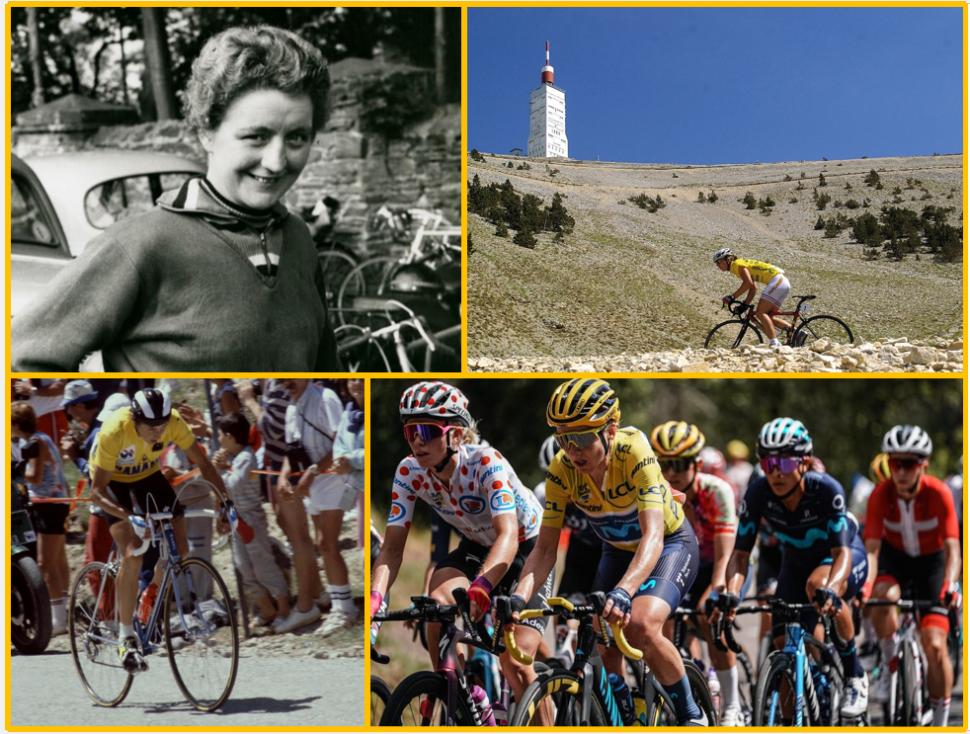 Tour de France Femmes history
Tour de France Femmes historyThe Tour de France Femmes’ Long and Winding Road: A brief history of the women’s Tour de France
On Sunday morning, the peloton will roll out of Clermont-Ferrand for start of the second edition of the relaunched Tour de France Femmes. After the roaring success of the 2022 Tour Femmes, in terms of both the racing and the fervent roadside and television audience (recent data revealed that the race reached a cumulative audience of over 23 million people), expectations are high for an event that is already, just twelve months into its renaissance, an integral part of the women’s cycling calendar.
Not that the Tour de France Femmes is resting on its laurels, however. The 2023 edition appears keen to cast off the shackles of its association with the all-encompassing Tour Hommes – the Paris start, a kind of symbolic ‘handover’ from the men’s race, is already gone, replaced by some tough opening days in the Massif Central: a decision informed, race director Marion Rousse says, partly by a desire for the race to assert its independence, and partly to put together an interesting sporting test.
The groundbreaking narrative of the Tour de France Femmes – rhetoric commonly used throughout 2022’s ‘inaugural’ edition – continues at pace this year. The 2023 Tour de France Femmes, according to the official record, is again one of firsts. A first start away from Paris, a first venture in the Pyrenees (with a summit finish atop the iconic Col du Tourmalet, no less), and a first decisive final day time trial in Pau.
Because, if you were reading the official Tour preview, you’d be fooled into thinking – with the exception of one or two casual references to the 1980s – that everything began in 2022.
But the Tour de France Femmes avec Zwift (to give it its full title), as all those who fought to secure a stable, successful Tour de France for female riders will attest, forms part of a long history, one even more circuitous and taxing than the route the riders will face through the middle and south of France over the next eight days.
The long, hard fight
Because rather than a historic first, last year’s “inaugural” Tour de France Femmes was something of a rebirth, the culmination of a long fight to get something back, not gain something new.
The first women’s Tour de France was, in fact, held almost seven decades ago, in 1955. The race was the brainchild of journalist and sometime-team manager Jean Leulliot, who organised the infamous Circuit de France stage race in 1942 with the collaboration of the Nazis, and was the race director, and then owner, of Paris-Nice.
The inaugural Tour de France Féminin – only the second women’s stage race of its kind, after the Circuit Feminin Lyonnais-Auvergne was held earlier that year, in July – took place over five days in Normandy in September and October 1955.
It was won by Irish-born Isle of Man rider Millie Robinson, the winner of the Lyonnais-Auvergne race two months previously, who secured her historic (and largely forgotten) success via a late attack into Elbeuf on stage four and a dominant time trial performance – unsurprisingly, for someone from this part of the world – the following day.
However, despite the race’s apparent success, Leulliot quickly abandoned his experiment after just one edition.
Almost three decades later, in 1984, the idea was eventually revived by the Tour’s co-organiser Félix Lévitan. This time, the event much more closely resembled the men’s race and could properly be described, in the modern parlance, as a ‘grand tour’, and one which actually took the riders on a tour of France.
Two-time Tour Féminin winner Maria Canins climbs the Col d'Izoard during the 1986 race
The 1984 edition, held in the same summer as the inaugural women’s road race at the Olympic Games, took place over 18 days, with the women riding shortened versions of the men’s stages, including the iconic Alpine and Pyrenean passes such as the brutal Col de Joux Plane, earlier in the day.
That first-ever Tour de France Féminin, won by American Marianne Martin (two years before Greg LeMond became the country’s first male winner), kickstarted what was arguably the first ever golden age of women’s cycling.
Running concurrently with the men’s race meant that the pioneering women’s peloton were greeted by the same huge crowds, on the same iconic roads, while images of three-time winner Jeannie Longo – who enjoyed a brilliant rivalry with Italian double winner Maria Canins – on the final podium in Paris alongside Stephen Roche and LeMond, are embedded in the psyche of cycling fans of a certain vintage.
However, despite its links to the men’s event, the Tour de France Féminin retained an amateur-style, hard-scrabble feel, and was barely promoted beyond those taking part and the people they passed on the roadside. The ‘grand tour’ aspect of the race was also increasingly diluted as interest struggled to ignite – by 1989, it had been reduced to an 11-day race and was almost 300km shorter than its 1984 equivalent.
Following that 1989 edition, won once again by the dominant rider of her generation Longo, incoming Tour director Jean-Marie Leblanc scrapped the race, citing the commercial and financial concerns of running a race with limited media coverage and sponsorship (Leblanc missing the irony, clearly, of who was responsible for drumming up that interest).
Even more crucially, Leblanc and organisers ASO prevented other aspiring race planners from using the Tour de France trademark, ridding subsequent attempts at a women’s grand tour in France, such as the initial Tour of the EEC (first won in 1990 by four-time world champion Catherine Marshal) of much-needed legitimacy and exposure.
The trademark issue became a persistent thorn in the side for the event’s eventual successor, Pierre Boué’s Tour Cycliste Féminin (which later became known in 1998 as the Grande Boucle Féminine, after ASO complained, predictably, about the previous name).
Despite featuring long and tough stages, and some of France’s most iconic climbs (the 1995 edition included a finish on Alpe d’Huez) the Grande Boucle struggled to draw in sponsors and was dogged by organisational difficulties such as poor accommodation and unpaid prize money. The two-week race was missing from the calendar in 2004, and returned in a much-shortened format the following year.
The final edition of the Grande Boucle in 2009, won by Emma Pooley (the third British triumph in four years following Nicole Cooke’s successes in 2006 and 2007) was only four stages and 306.5km-long, prompting Pooley to memorably describe it as “more of a Petite Boucle”.
Not that there was anything “petite” about the riders’ performances, however. The first of Cooke’s back-to-back wins, in 2006, saw the future Olympic and world champion ride away solo in the yellow jersey on Mont Ventoux – a poignant site for British cycling – to secure a dominant victory.
Rebirth
Nevertheless, the demise of the Grande Boucle acted as a catalyst for a rethink – for a women’s Tour de France to be successful and sustainable, it had to have the backing of, you guessed it, the Tour de France.
In the late 2000s, a campaign was launched by pro cyclist, film maker, and writer Kathryn Bertine, who was later joined by Pooley, the sport’s new superstar Marianne Vos, and triathlete Chrissie Wellington, to convince Tour organisers ASO to put their weight behind a real women’s Tour de France.
Lizzie Deignan outsprints Marianne Vos at the 2020 La Course
In 2014, the Tour organisers finally relented, to some degree, and came up with La Course by Le Tour de France. Originally held as a crit-style race around Paris on the same day as the final stage of the men’s race, the organisers then tinkered with a few mid-race experiments, while never expanding the event beyond two days.
Though La Course, and especially its first three years on the Champs-Élysées, felt at times like more of a concession than a statement of intent, a bolted-on afterthought rather than a sustainable plan for future growth, it nevertheless galvanised Bertine, Pooley, and Vos’s campaign for a proper, stable stage race under the Tour de France umbrella.
And with some scintillating racing to boot, especially once the race ventured beyond Paris – Annemiek van Vleuten’s stunning, last-ditch duel with Anna van der Breggen in the Alps in 2018 the undoubted highlight of the race’s tenure – even ASO couldn’t resist the hand of history, as well as the expectations of a sport and an audience that was fast outgrowing races seemingly more akin to amuse-bouches or petit fours than the full tasting menu of a grand tour.
In June 2021, ASO announced that a new women’s eight-day stage race, the Tour de France Femmes, would take place the week after the following year’s men’s race. A Tour de France for women was finally, after decades of struggle and frustrations, back.
And, it’s safe to say, the women’s peloton certainly made the most of the opportunity during a frenetic, exhilarating week on the fan-packed roads of France last year.
Stage four’s foray onto gravel brought drama and chaos, while Cecilie Uttrup Ludwig’s brilliant, come-from-behind sprint in Épernay – after a torrid opening few days for the Dane’s FDJ-Suez-Futuroscope team – reinforced her position as one of the sport’s darlings and its most entertaining interviewee.
Meanwhile, Annemiek van Vleuten’s stunning success in the Vosges mountains, after a battle with illness earlier in the week, provided the race with an inspiring, if ultimately predictable, climax.
But it was the success of the greatest rider of all time, Marianne Vos, that perfectly encapsulated what was a week-long celebration of women’s cycling. Vos’s two stage wins and five days in the yellow jersey proved not only fitting for a rider who has given the sport so much during her long, storied career, but for women’s cycling itself.
This was a case of cycling’s most iconic rider finally gracing the stage she has deserved for almost two decades. Vos fought long and hard for her moment at the Tour, and she deserved every second of it.
For one of the riders who took part in last year’s relaunched race, British road race champion Pfeiffer Georgi, the 2022 Tour de France Femmes was a “massive moment” for women’s cycling.
“It was a really amazing atmosphere,” the DSM rider told the road.cc Podcast. “We started on the Champs-Élysées and had our team presentation in front of the Eiffel Tower. The crowds were insane.
“Everyone had this feeling that it was a massive moment for women’s cycling. We waited a long time to have the race back, and just the support and the excitement of the racing every day, there was so much to fight for. And I felt very lucky to compete in the first edition of this new format.”
Of course, while we all got carried away with the euphoria of a fourth week of racing in July, the Tour Femmes isn’t perfect, and we should be cautious when evaluating what essentially amounts to a spot of late-stage band wagoning by ASO.
First, inequality still strikes at the heart of the relaunched women’s Tour. For starters, can an eight-day race really be defined as a ‘grand tour’? And even if there are plans in place to eventually expand the race to two, or even three, weeks, money remains an ever-present issue: Van Vleuten received €50,000 in prize money for her career-defining triumph, a tenth of what her male equivalent Jonas Vingegaard earned for winning the men’s Tour.
Despite the efforts of other race organisers, such as Flanders Classics – who this year began to offer equal prize money across its stable of one-day races – that chasm remains painfully intact for this year’s Tours de France.
Another measure of the gulf between how ASO views its male and female events lies most glaringly in the lack of line-to-line television coverage for the Tour Femmes. While the Tour Hommes has been graced with ‘every kilometre counts’ coverage for well over a decade now, the Tour Femmes more closely resembles the mid-2000s approach to watching a bike race on TV.
Last year, arguably the defining moment of the entire race came when Van Vleuten blew the field to shreds on the Petit Ballon, the first of stage seven’s three mammoth climbs – it’s just a shame no-one was able to see it, as the television cameras had yet to start rolling.
“I would love to see more TV coverage,” says Georgi. “I think that’s one of the most important things at the moment. People find our racing exciting, they want to watch it, and when it’s there, they do watch it. Some of the women’s classics have more viewers than the men’s.
“The interest and excitement are there, that’s where it all begins. That’s where people see it, that’s where sponsors get their products and name shown. TV coverage is the catalyst for everything, and getting our racing and love for the sport out there more.”
Reflecting on the impact of the Tour Femmes on women’s cycling, the 22-year-old continued: “The Tour is the pinnacle of cycling. And people who don’t know cycling always ask ‘have you raced it?’ I think everyone is so happy to say yes, we finally have it on our calendar.
“The first edition was eight stages, and I can see that growing over the years. It’s nice that it’s after the men’s Tour too, so the focus is on us. The crowds that came out, not just in Paris, but La Planche des Belles Filles was one of the craziest experiences I’ve had.
“It felt like I was on the Tour I’ve always watched on TV.”
It’s clear that women’s cycling, which experienced a great leap forward in terms of the quality of its races and the levels of professionalisation in the period between the last Grande Boucle in 2009 and the ‘inaugural’ Tour Femmes in 2022, deserves it place on cycling’s biggest stage.
It’s now up to ASO to make sure that the curtain doesn’t fall again.
Ryan joined road.cc in December 2021 and since then has kept the site’s readers and listeners informed and enthralled (well at least occasionally) on news, the live blog, and the road.cc Podcast. After boarding a wrong bus at the world championships and ruining a good pair of jeans at the cyclocross, he now serves as road.cc’s senior news writer. Before his foray into cycling journalism, he wallowed in the equally pitiless world of academia, where he wrote a book about Victorian politics and droned on about cycling and bikes to classes of bored students (while taking every chance he could get to talk about cycling in print or on the radio). He can be found riding his bike very slowly around the narrow, scenic country lanes of Co. Down.
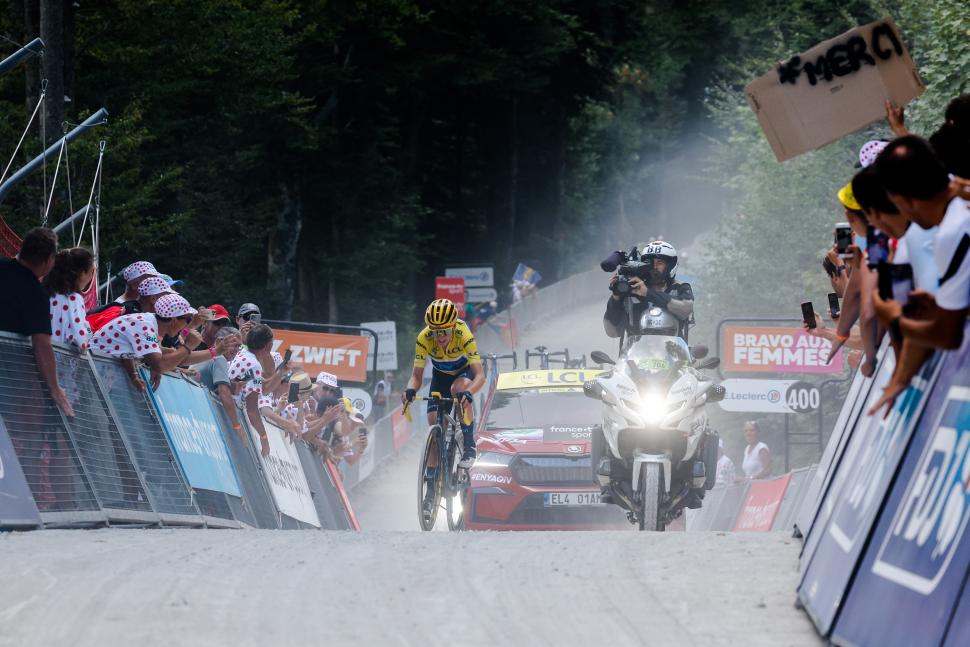

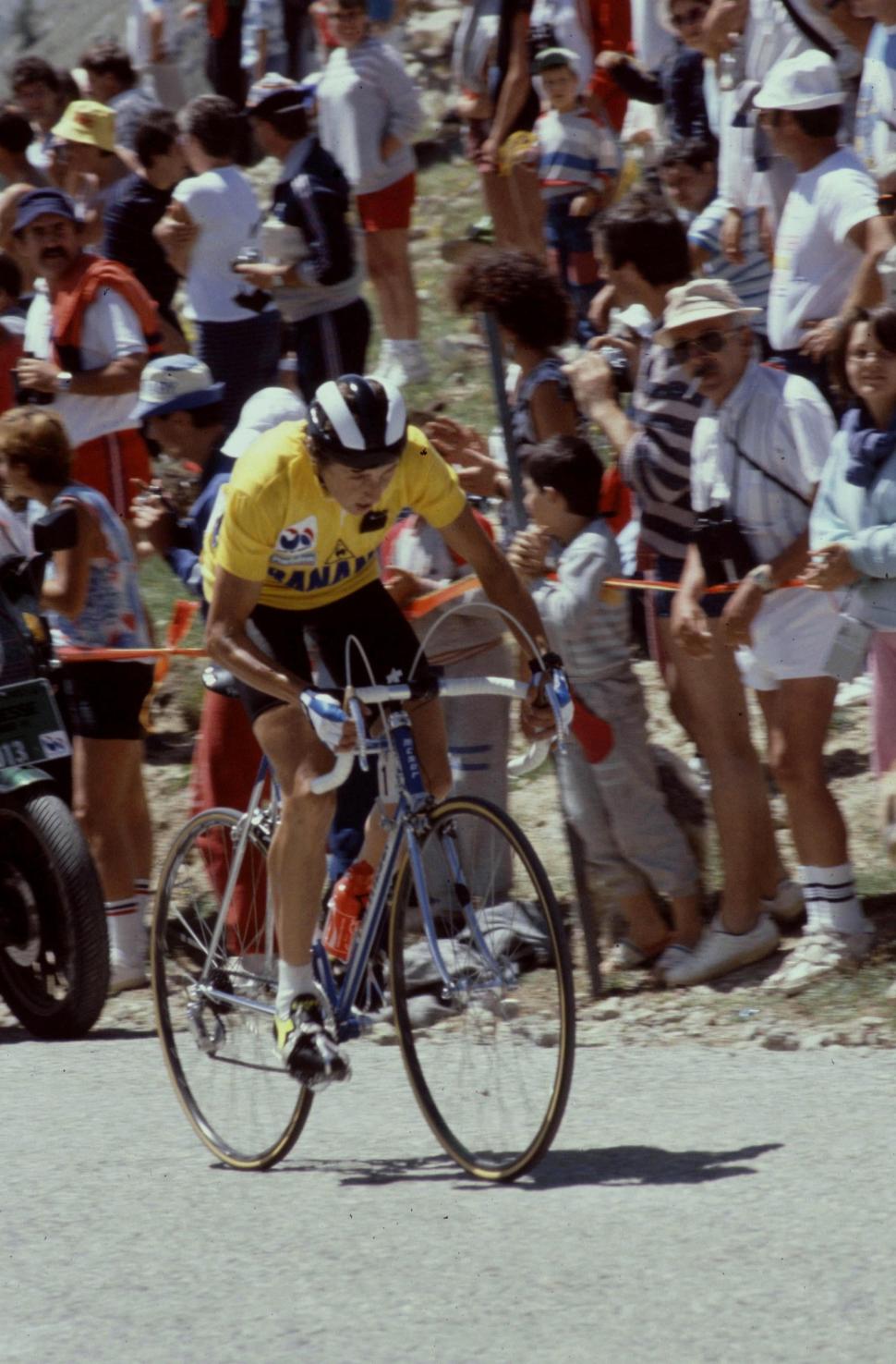


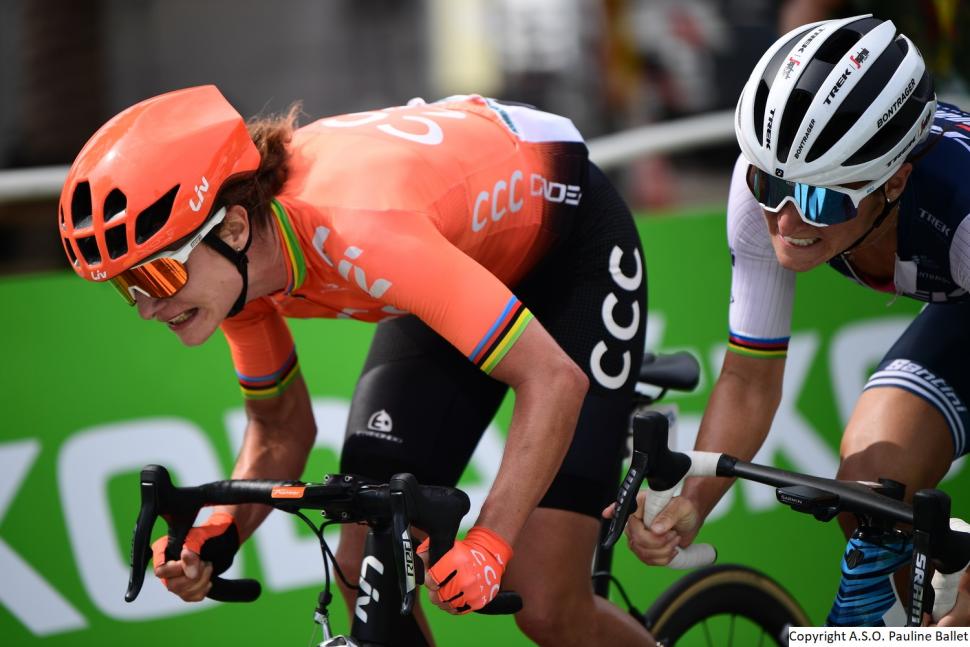
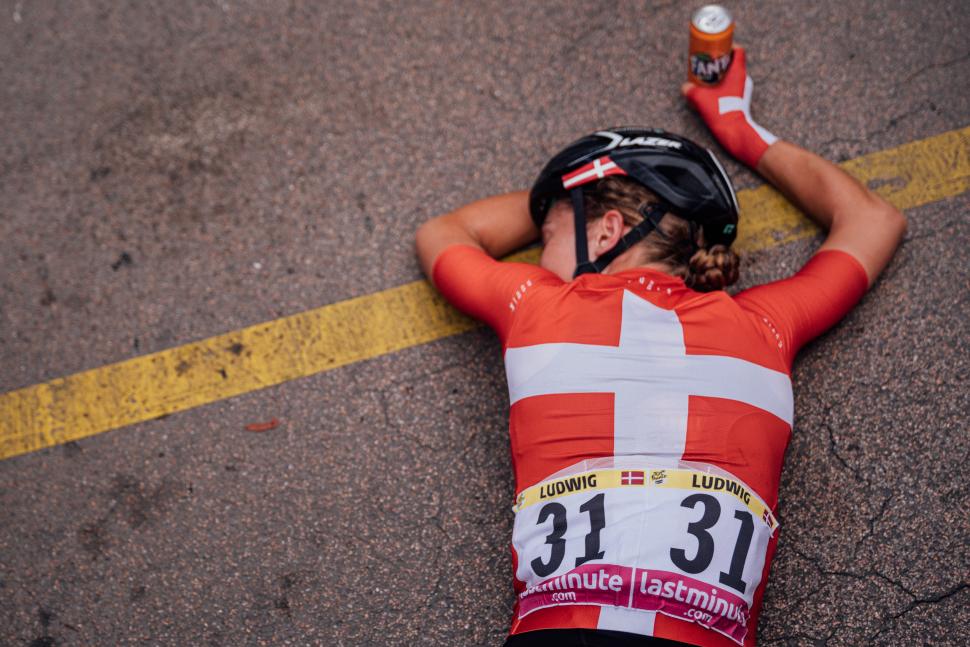
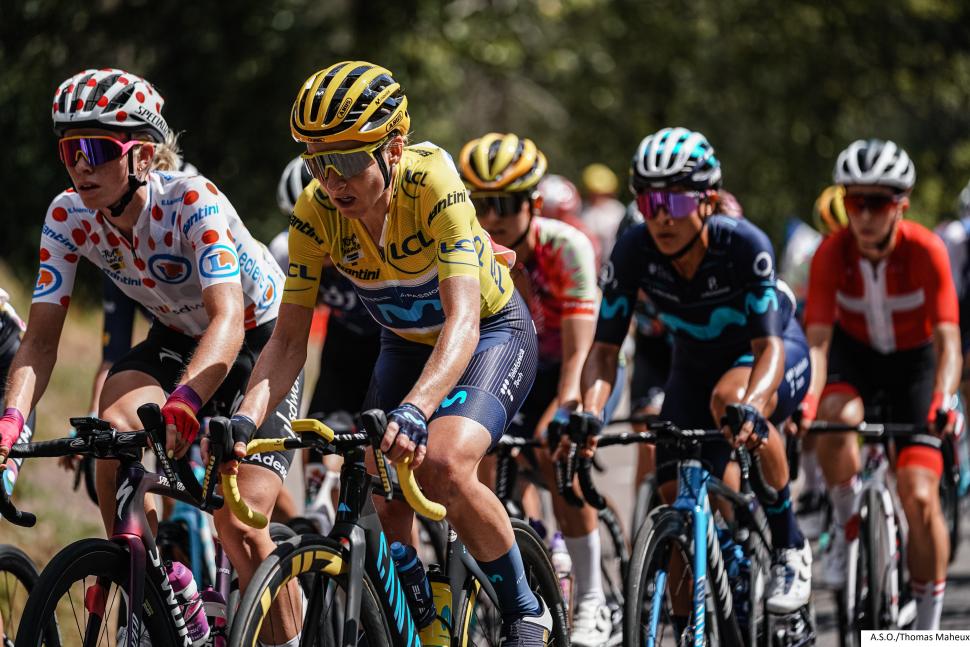
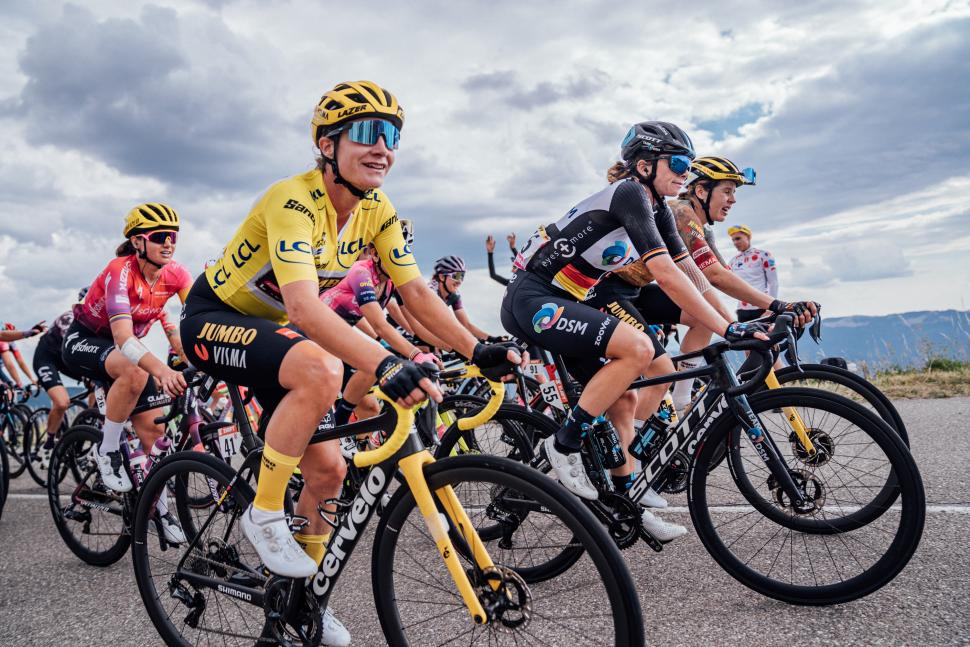
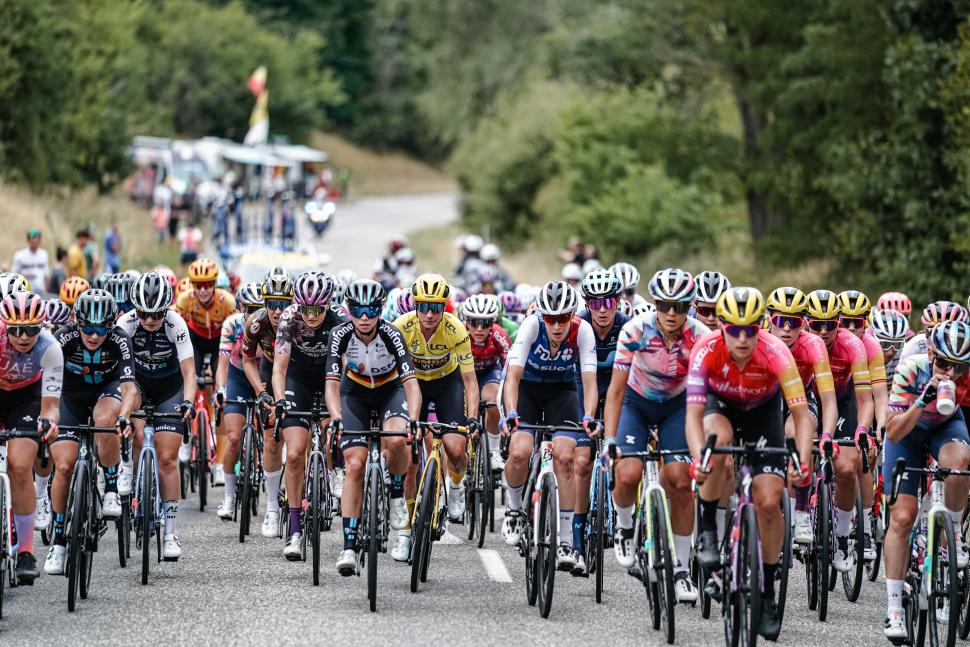

maybe so, but its clumsy as hell bit of driving, an oncoming car literally has to stop to enable them to complete their overtake without causing...
I also think he knows..
I've been really happy with my Rapha cycling stuff - mainly the cheaper end as core is more than sufficient. The colours recently have been very...
Frame built by my own fair hand, heavily supervised, at the former Downland Cycles a few years ago. Cobalt blue by Argos. ...
when 3D arione plz
So - to something like a photog's mini reflector. I do enjoy working out the detail of what will be the best solution.
I think the mass of the car can be treated as infinite, in the sense that the velocity of the car is not going to change much at all on impact....
Signs installed by Devizes Town Council. AFAIK they are not the Local Highways Authority, and have no authority to install such signs.
Tom Allen? Please tell me you don't mean the comedian.
A flame thrower dog robot is something every cyclist needs.